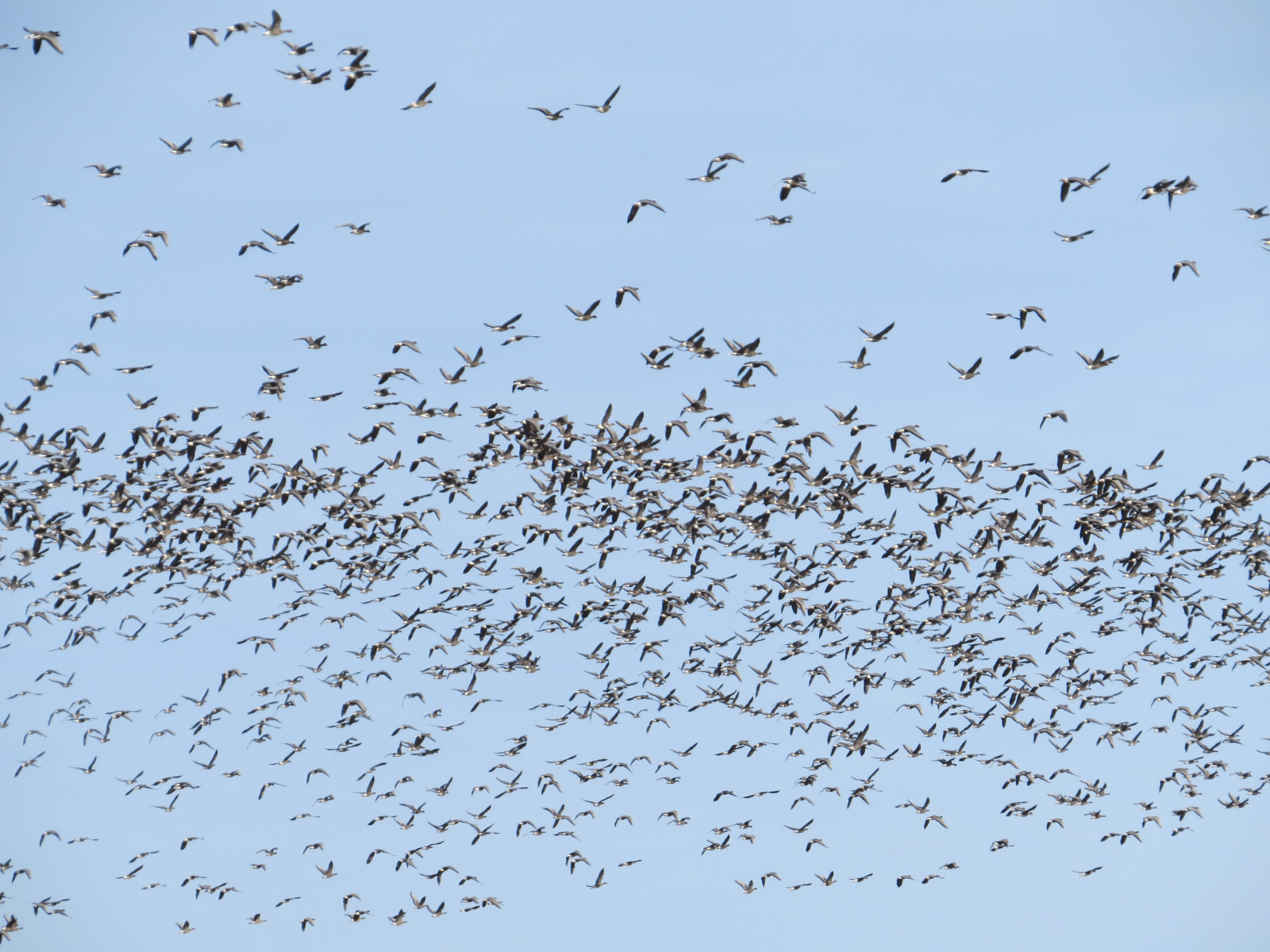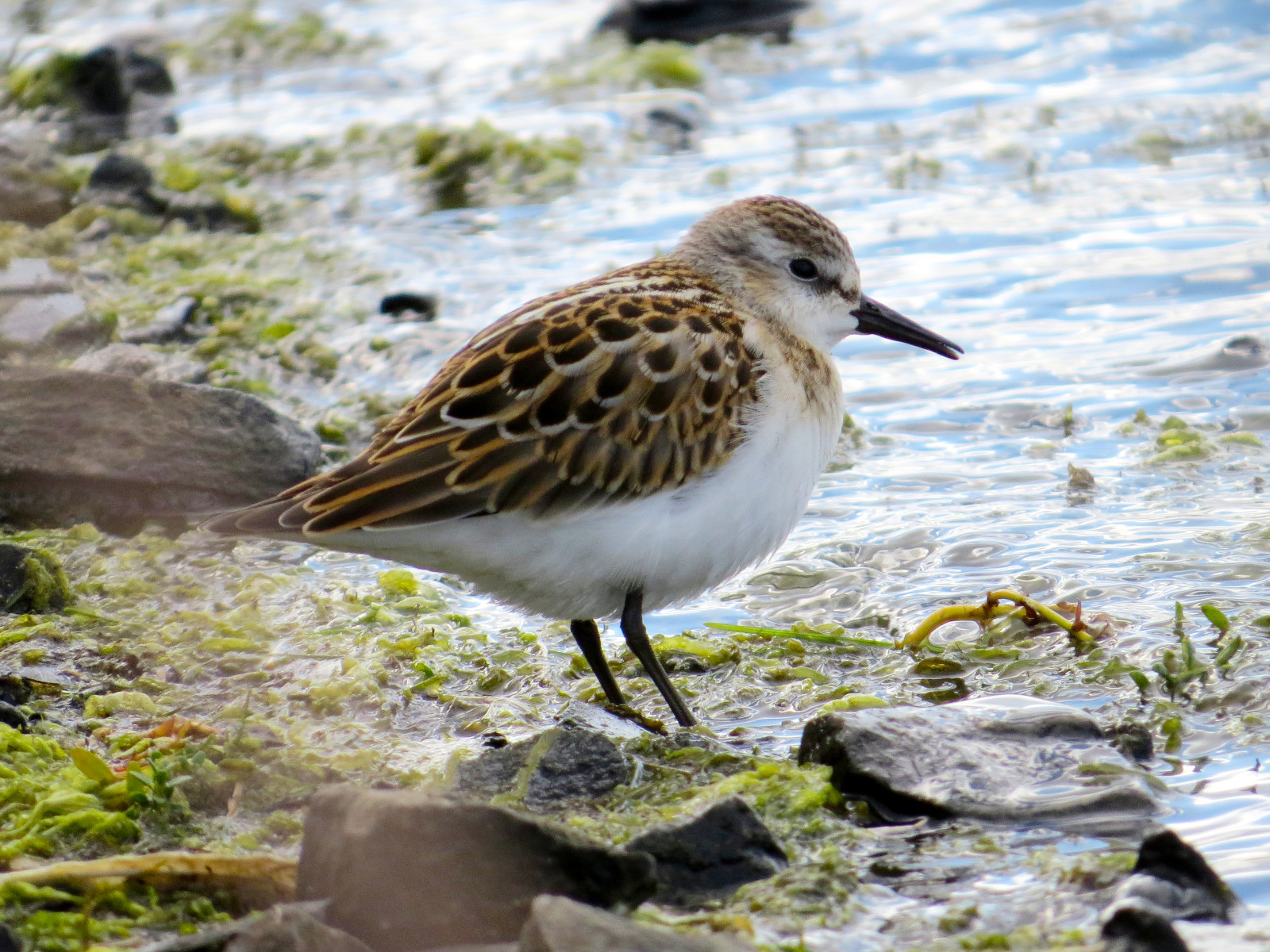Opis
Cresswell Pond, at the south end of the Druridge Bay coastline, is a shallow brackish lagoon, providing a year-round haven for wading birds and wildfowl. The majority of the site is the lagoon but there are areas of reed bed, two smaller ponds, a path and boardwalk leading down towards a bird hide. There is a wide variety of birds, especially interesting during migration periods. In spring and summer, szablodziób feed in front of the hide, and in autumn, rycyk and batalion are frequent. There are lots of ducks and geese, with gęś krótkodzioba often in the thousands and świstun in hundreds in the surrounding fields in the winter; the small pool southeast of the main pond can attract cyranka in spring. płomykówka (zwyczajna) can be seen too in the area. Bird feeders in the willows behind the hide attract mazurek and trznadel; these willows also attract a few coastal migrants like zniczek and świstunka żółtawa in autumn. Rarities have included biegus białorzytny, biegus brodzcowaty, multiple biegus arktyczny, platkonóg trójbarwny, szlamiec dlugodzioby, dzierzba pustynna, and trzciniak.
Szczegóły
Dostęp
Better by car, although it is possible to get by public transport to Cresswell village and then walk. There is space for parking right after leaving the main road before getting to the farm (see the P on the map).
Note that after heavy rain, or very high tides, the adjacent road tends to get flooded. Be cautious if trying to go through, the water can get to around 30 cm deep.
Teren i siedlisko
Tereny podmokłe , Rolnictwo/uprawy , Plaża , Wydmy , Jezioro , Rzadkie drzewa i krzewy , Łąka , Morze , TrzcinowiskaWarunki
Płaski , Bagienny , Otwarty krajobraz , Możliwy wysoki poziom wodyTrasa dookoła
NieCzy luneta będzie przydatna ?
Może być przydatnaUdany sezon obserwacyjny
Przez cały rokNajlepszy czas na wizytę
Wiosenne migracje , Jesienne migracjeTrasa
Droga nieutwardzonaPoziom trudności szlaku pieszego
ŁatwyDostępne
PieszoCzatownia/platforma obserwacyjna
TakDodatkowe informacje
Cresswell Pond was created as the result of subsidence from old collapsed mine works, the pond’s proximity and connection to the sea means the water is a mix of fresh and salt (brackish), and as such it is an excellent feeding ground for wading birds. It is particularly good during the spring and autumn passage when rarities often occur. szablodziób nested here in 2011, the most northerly site in the UK. Large numbers of waterfowl often roost here, with small numbers of gęgawa and gęś krótkodzioba.




